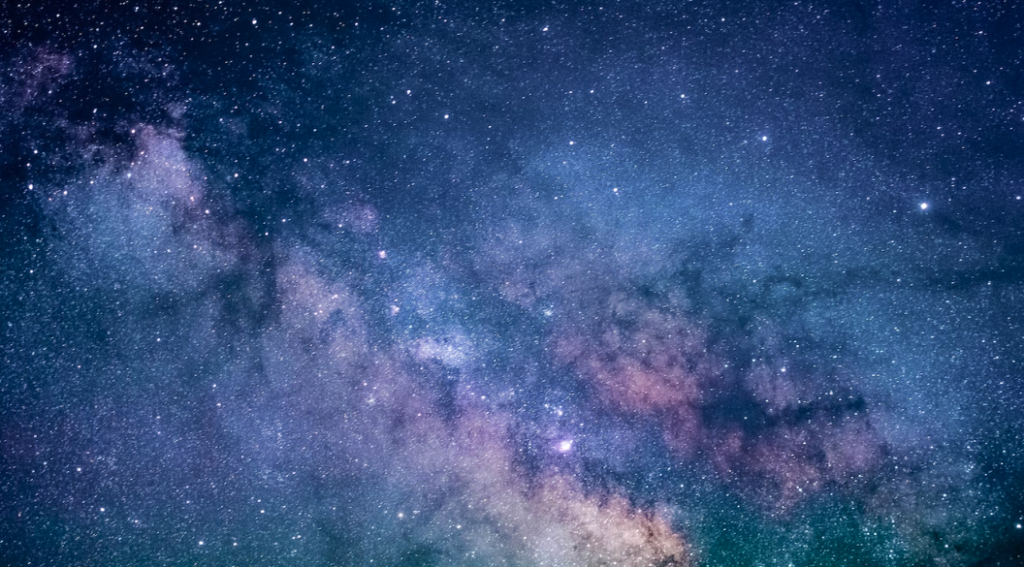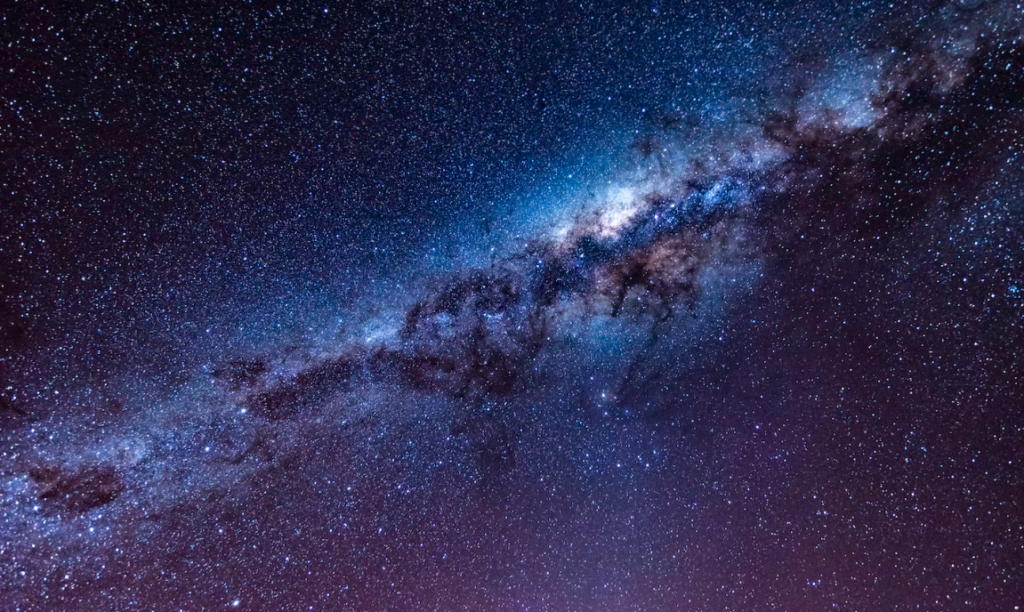Galaxy vs Universe
Did you know that 0.12 pixels is how big earth appears from 6 billion km into space? That’s like a tiny speck of dust, smaller than the period at the end of this sentence. For context, earth has a circumference of 40, 041 km, a volume of 1.083 x 1012 km, and a surface area of 510, 072, 000km!
These numbers are staggering, yet they pale in comparison to galaxies and the larger cosmic scale of the Universe. It is therefore no surprise that the galaxy vs universe question lingers as we seek to make sense of this vast mass of space we call home.
While most people may be familiar with celestial bodies such as the Sun, other stars, the Moon, the planets, the Solar System, galaxies, and the Universe itself, few understand how they are structured, how they interact, and how they compare and contrast with each other.
In this article, we will address questions such as what is a galaxy, what is the Galaxy, how many galaxies are there, what is the Universe, and what are the similarities and differences between galaxies and the Universe? This will help to demystify the galaxy vs universe conundrum.
What is a Galaxy?
According to NASA, a galaxy is a huge collection of gas, dust, and billions of stars and their solar systems, all held together by gravity. The Milky Way is our home galaxy containing the Earth and its Solar System, among others. It is so called due to its appearance as seen from earth.
When referring to our own galaxy, the Milky Way, we call it the Galaxy, with a definite “the” article. Therefore, the Galaxy is the Milky Way comprising the Sun, eight planets, and other interplanetary components bound together by gravity. It is part of the Local Group (the group containing the Milky Way) and has a diameter of 1, 000, 000, 000, 000, 000, 000 km.

Types of Galaxies
There are four different types of galaxies. They are spiral, elliptical, peculiar, and irregular galaxies. These galaxy types are so named because of their shapes. Spiral galaxies are further divided into two, normal spirals and barred spirals. The Milky Way is a barred spiral galaxy.
Elliptical galaxies are of two types, giant ellipticals, and dwarf ellipticals. Peculiar galaxies are divided into interactive galaxies and active galactic nuclei (AGN). Similarly, the Hubble Classification system recognizes two types of irregular galaxies, the Irr-I (Irregular one) and the Irr-II (Irregular two). A third less recognized dIrr (dwarf irregular) also exists.
How Many Stars Are In a Galaxy?
Galaxies can contain anywhere from a few thousand to trillions of stars depending on their size. The Milky Way is reported to contain over 100 billion stars. By contrast, the IC 1011 galaxy contains a whopping 100 trillion stars, 100x more than the Andromeda Galaxy.
Similarly, galaxies can grow in size, collide with, and merge with other nearby galaxies to form even larger galaxies. For instance, the Milky Way is projected to collide with and merge with the Andromeda Galaxy in approximately 4.5 billion years.
What Is the Largest Known Galaxy?
The largest known galaxy, Alcyoneus, is a normal elliptical galaxy. It has a mind-boggling diameter of 16.3 million light-years. For context, one light-year is 9, 461, 000, 000, 000 km! Similarly, the nearest galaxy to us is the Canis Major Dwarf which is 236, 000, 000, 000, 000, 000 km or 25, 000 light-years from the Sun.
According to New Scientist, the smallest known galaxy outside our local universe was recently spotted by the James Webb Space Telescope (JWST) using the massive El Gordo galaxy cluster as a guide. Previously, this title belonged to Segue 2, a dwarf spheroidal galaxy about 114, 000 light years from the Sun.
Galaxy Clusters and Superclusters
The majority of galaxies exist in clusters. Galactic clusters can contain hundreds or thousands of galaxies bound together by gravity and can weigh up to 1014 1015 solar masses. One solar mass is approximately 2×1030kg. They’re the second largest gravitationally bound structures in the Universe after Galaxy Filaments.
Superclusters are groups of galaxy clusters but unlike galactic clusters, they are not gravitationally bound together. The Laniakea Supercluster contains the Virgo Supercluster which contains the Local Group which contains the Milky Way. Superclusters are the largest non-gravitationally bound structures in the Universe.
What is the Universe?
The Universe is so expansive and still expanding. It is believed to have been formed from the Big Bang some 13.7 billion years ago. The furthest visible portion of the Universe is said to be an astronomical 46 billion light-years away.
The Universe consists of the planets, stars, solar systems, constellations, galaxies (galaxy clusters, superclusters, galaxy filaments); all of the cosmos, and all existing space, matter, and time. It is the whole, the Superset.
How Many Galaxies Are in the Universe?
Some galaxies can contain billions and trillions of stars, solar systems, and galactic material combined. For example, the Milky Way alone has more than 100 billion stars in it. But, how many galaxies can fit into the Universe?
Although estimates vary widely, recent studies say there can be anywhere between 100 billion and 200 billion galaxies spread out across the Universe. Sizes and distances of this scale and magnitude are hard to imagine for the average onlooker.

Galaxy vs Universe Comparison Table
The galaxy vs universe comparison table below will make it easier to compare and contrast galaxies and the Universe. It is a summary highlighting their key similarities and differences.
| S/N | Description | Galaxy | Universe |
| 1. | Nature | Celestial body. | The entire Cosmos. |
| 2. | Age | 200 million years after the Big Bang, approximately 13.5 billion years. | Approx 13.7 billion years. |
| 3 | Formation | Gas + dust + collisions + mergers. | Big Bang |
| 4. | Composition | Gas, dust, and billions of stars and their solar systems. | Planets, stars, solar systems (their moons, dwarf planets, asteroids, meteoroids, Kuiper belt objects, comets, and interplanetary dust), constellations, galaxies (galaxy clusters, superclusters, galaxy filaments); all of the cosmos, and all existing space, matter, and time. |
| 5. | Quantity | 100 billion – 200 billion. Some estimates say up to 2 trillion. | One. |
| 6. | Largest Size | 16.3 million light-years across (Alcyoneus). | 93 billion light-years in diameter. |
| 7. | Types | Spiral, elliptical, peculiar, and irregular. | Universe, possible multiverses. |
| 8. | Expansion | Growth, non-expanding. | Ever expanding. |
| 9. | Visibility (with naked eyes) | Milky Way, Andromeda. | As far as the eyes can see. |
| 10. | Nomenclature | Milky Way, Silver River, Silver of Night, etc | Universe, cosmos, macrocosm, etc. |
Galaxy vs Universe Explained
In this article, we have covered some grounds explaining what galaxies are and how they behave. We have also talked about their formation, composition, sizes, types, and shown how galaxies and the Universe compare with each other.
